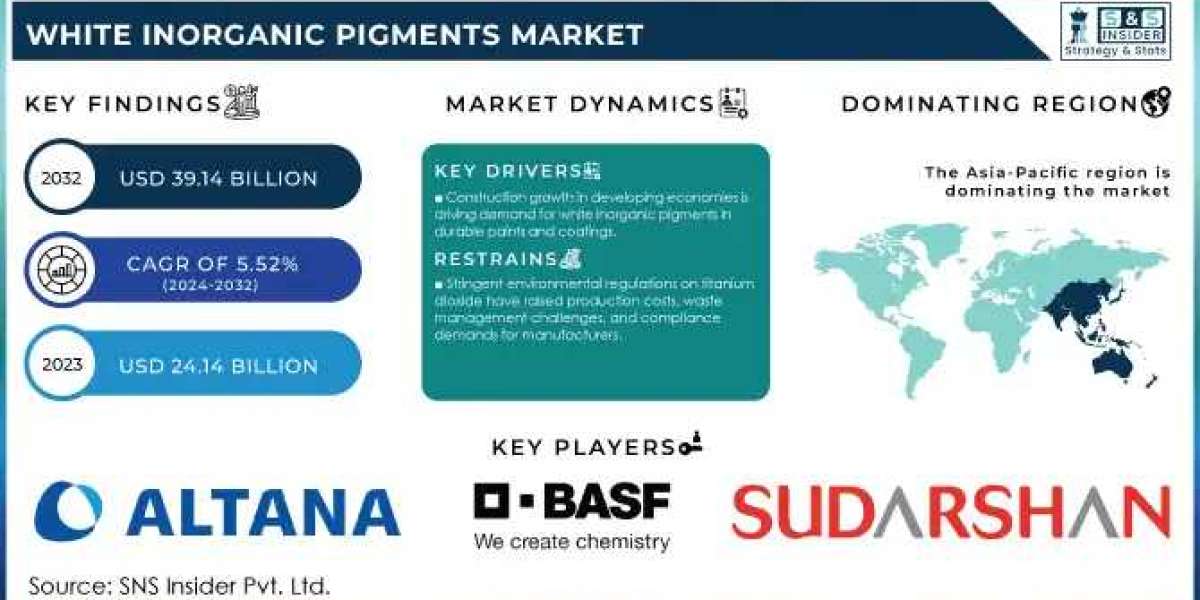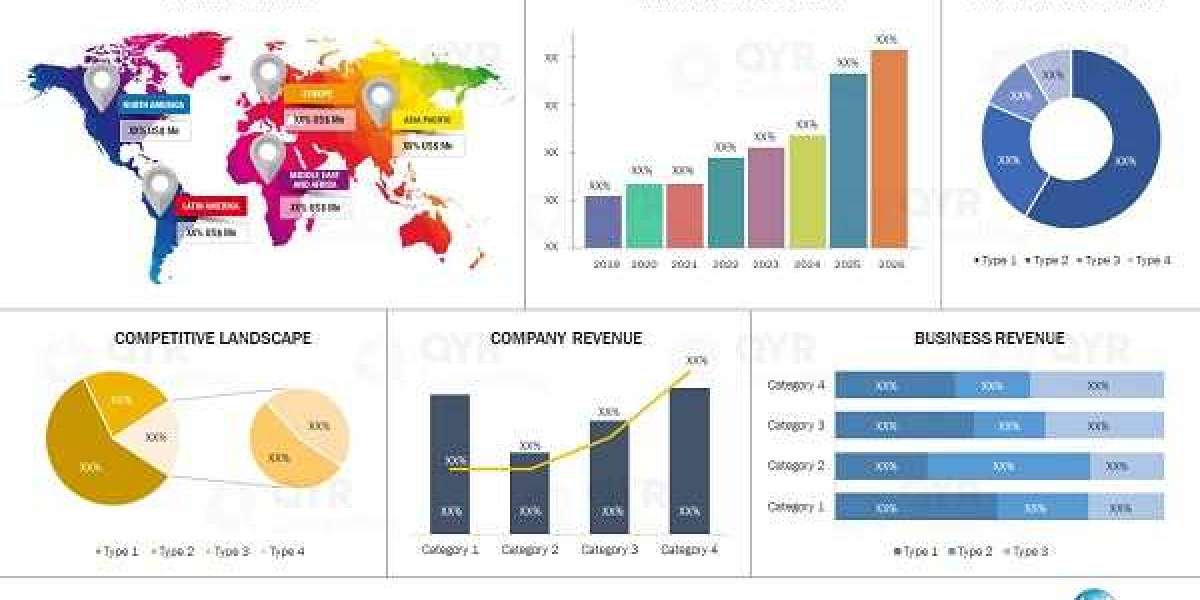The White Inorganic Pigments Market size was estimated at USD 24.14 billion in 2023 and is expected to reach USD 39.14 billion by 2032 at a CAGR of 5.52% during the forecast period of 2024-2032.
The White Inorganic Pigments Market is driven by the increasing demand for high-performance coatings, plastics, and construction materials. White inorganic pigments, such as titanium dioxide (TiO₂), zinc oxide, and calcium carbonate, are widely used in paints coatings, plastics, paper, and cosmetics for their opacity, brightness, and UV resistance. With advancements in nanotechnology and eco-friendly pigment formulations, the market is expanding to meet the needs of sustainability-focused industries.
Key Players
- Altana AG (TiO2-based pigments)
- BASF SE (BASF TiO2, Satintone)
- Sudarshan Chemical Industries Limited (Titanium Dioxide Pigments)
- Cathay Industries Group (Titanium Dioxide Pigments, Cathay TiO2)
- Clariant International Ltd. (White pigments, TiO2)
- Cristal (Titanium Dioxide, TiO2-based pigments)
- Ferro Corporation (Titanium Dioxide Pigments, Ferro White Pigments)
- Gharda Chemicals Limited (Titanium Dioxide Pigments, TiO2)
- Heubach GmbH (White inorganic pigments, TiO2)
- KRONOS Worldwide Inc. (Titanium Dioxide Pigments, Kronos TiO2)
Future Scope
The white inorganic pigments market is expected to witness steady growth, driven by rising infrastructure projects, expanding automotive production, and increasing demand for sustainable and high-quality pigments. The construction and automotive sectors are key consumers, using white inorganic pigments in paints, coatings, and plastics for aesthetic enhancement and durability. Additionally, the rising preference for low-VOC (volatile organic compound) coatings and eco-friendly formulations is pushing manufacturers toward advanced pigment technologies. Innovations in nanoparticles and hybrid pigment solutions are also expanding the application range across healthcare, textiles, and electronics.
Emerging Trends
The market is shifting towards sustainable and energy-efficient pigment production, with titanium dioxide alternatives being developed to reduce environmental impact and carbon emissions. Nanotechnology-based pigments are gaining traction for their enhanced brightness, UV stability, and anti-microbial properties, making them ideal for automotive coatings, packaging materials, and personal care products. The growth of the electric vehicle (EV) sector is also driving demand for heat-reflective and high-durability pigments. Additionally, innovations in recyclable and bio-based white pigments are aligning with circular economy initiatives across industries.
Key Points
Increasing demand from construction, automotive, and packaging industries.
Advancements in nanotechnology enhancing pigment performance and durability.
Rising preference for eco-friendly, low-VOC, and sustainable pigment solutions.
Titanium dioxide alternatives and hybrid pigments gaining market attention.
Growing applications in electronics, textiles, and personal care industries.
Conclusion
The White Inorganic Pigments Market is poised for substantial growth, driven by technological advancements, environmental regulations, and expanding industrial applications. As industries prioritize high-performance, sustainable, and energy-efficient solutions, the demand for innovative white pigments will continue to rise. With ongoing RD and strategic industry collaborations, the market is set to play a crucial role in shaping the future of coatings, plastics, and specialty materials worldwide.
Read Full Report: https://www.snsinsider.com/reports/white-inorganic-pigments-market-1810
Contact Us:
Jagney Dave — Vice President of Client Engagement
Phone: +1–315 636 4242 (US) | +44- 20 3290 5010 (UK)











